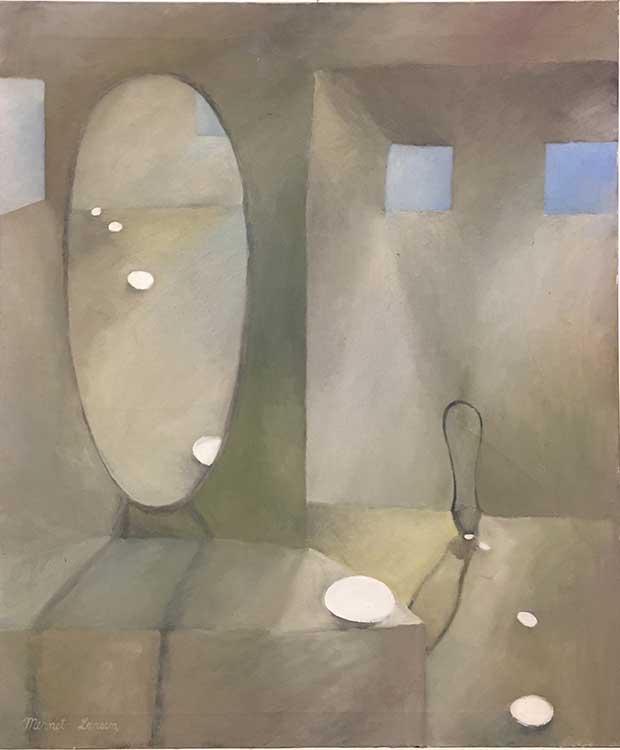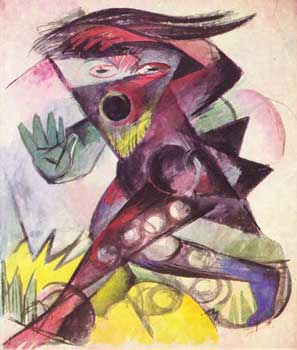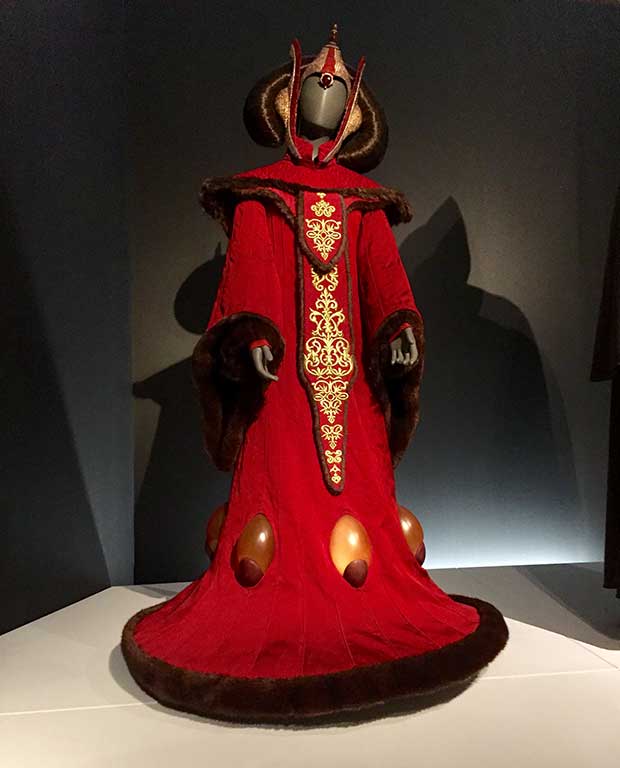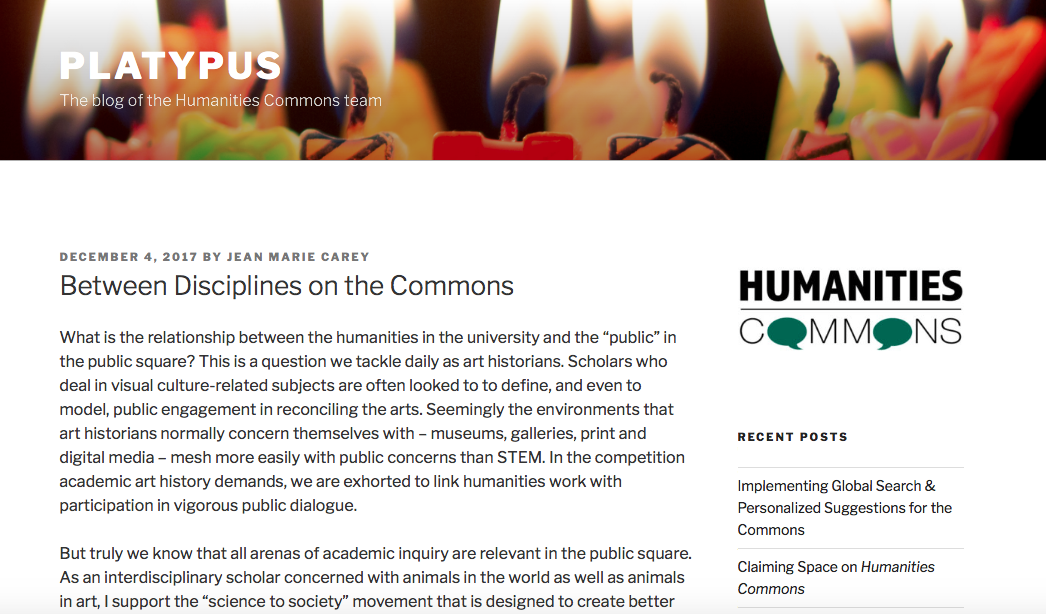
by Jean Marie Carey | 9 Feb 2018 | Art History
I have known Mernet Larsen from her role as professor as professor at the University of South Florida’s art studio department, and from her many trenchant and witty remarks on the art situation in Tampa, as well as from her kindness to students and fellow faculty. She made some very telling and compassionate comments at the small memorial for Bradley Nickels some years ago.
Nonetheless I felt as if I could give this retrospective at the Tampa Museum of Art a fair review and was glad I took the chance to do so for Empty Mirror. Larsen’s painting are intellectually engaging and unclassifiable. Many from Getting Measured, 1957-2017 are reproduced with the article so I will let you look at it on the Empty Mirror website, and it’s also archived as a PDF at the Humanities Commons Core Depository.

Eggs, 1961. Oil on canvas, Courtesy of the artist. © Mernet Larsen

by Jean Marie Carey | 12 Jan 2018 | Art History, August Macke, Franz Marc, Re-Enactments© and MashUps
My research about the 1914 Franz Marc essay »Das abstrakte Theater« and Marc’s collaboration with Hugo Ball on an intended production of The Tempest has been published in a special arts issue of Empty Mirror. The fun long title of the article is “The Tempest and the Savages: Franz Marc, Hugo Ball, and a Decisive Moment in Dada-Expressionist Theater With a Special Appearance by August Macke,” and this piece contains important breaking historical avant-garde news.

Fig.01: Franz Marc, Fragmentary First Page of „Das abstrakte Theater,“ 1914. Das Archiv für Bildende Kunst im Germanischen Nationalmuseum, Nürnberg, Germany.
Here is the abstract: This article discusses the 1914 Franz Marc essay “Das abstrakte Theater” and the events surrounding an “Expressionist” production of Shakespeare’s Der Sturm planned by Marc and Hugo Ball the same year. Marc’s position in this detour from painting and writing can be understood in terms of his embrace of “die ‘Wilden’” – “the ‘Savages’” – an idea Marc introduces in 1912’s Blaue Reiter Almanac – as a metaphorical aspiration and as a state of being for both artists and the public as patrons of the arts and citizens of modernity. I also bring recognition to August Macke’s background in theatrical theory and design in terms of how this influenced Marc, particularly in analysis of the artists’ collaboration on Macke’s contribution to the Blaue Reiter Almanac, the essay “Die Masken,” and how this relates to the Der Sturm project. I propose a way of understanding how Marc’s beliefs in the paradoxically beneficial power of destruction dovetailed with Ball’s theology. In the context of this background information I give close reading of paintings Marc made of the Caliban and Miranda characters from Der Sturm. I also correct inaccuracies in the record regarding the chronologies of this encounter between these protagonists of Dada and Expressionism, and in our understanding of Marc’s text itself. Viewing this data in a holistic manner allows new interpretations of influences and collaborations amid the historical avant-garde.
It is great working with Denise Enck at Empty Mirror so it would be nice to look at the article on the Empty Mirror website, but if you would like a PDF of the article there is one here and also at Humanities Commons.

Fig.04: Franz Marc, Miranda, 1914. ( Tempera, 46 x 39.5 cm.) Kunstmuseum Basel, Kupferstichkabinett der öffentlichen Kunstsammlung, Switzerland.

Fig.03: Franz Marc, Caliban, 1914. (Figure for Shakespeare’s „Der Sturm“. Tempera, 46 x 39.5 cm.) Kunstmuseum Basel, Kupferstichkabinett der öffentlichen Kunstsammlung, Switzerland.

by Jean Marie Carey | 2 Jan 2018 | Art History, Contemporary Art

Padmé Amidala’s throne room robes
This is a “locally-coloured” version of this exhibition review. See the “professional” iterations at Humanities Commons or on the Museum Bookstore website.
On view through the spring, this exhibition features 60 costumes representing characters from the Star Wars film saga from A New Hope in 1977 through The Force Awakens in 2015. These outfits are accompanied by selected accessories: props such as light sabers and artists’ sketches of how the costumes, and characters were originally envisioned and evolved. As a group the costumes highlight the intricacy of theatrical and cinematic clothing design. Membership in the cult of Star Wars is not a prerequisite for their appreciation.
These costumes and the drawings giving their background illustrate the evolution from storyboard to screen, and then of the characters who wear these ornaments and attributes. The earlier pieces from the original trilogy – The Empire Strikes Back (1980) and Return of the Jedi (1983) followed A New Hope – are closely allied to the vaguely fascistic, neo-classical iconography favoured by creator George Lucas. These styles – Reich-referencing Imperial officer and Stormtrooper uniforms, the togas and cloaks for Jedi masters Obi-Wan Kenobi and Luke Skywalker – tend to be simplified and literal. As the series progressed with Episodes I, II, and II I – The Phantom Menace (1999), Attack of the Clones (2002), and Revenge of the Sith (2005) – the prequels that appeared fourth, fifth, and sixth in order of release – costumes for both the Republic officials such as Bail Organa and Imperial minion Darth Sidious tend to be highly decorated while more referentially abstract. Particularly the scarlet robe and ornate crown for Princess-Senator Padmé Amidala Naberrie’s Phantom Menace throne room garb, which greets visitors at the exhibit’s entrance, is a marvel. The dazzling effect of the wardrobe of Padmé, portrayed in the films by Natalie Portman, was achieved by the imaginative and subtle use of beads, paillettes, layers of leggings and petticoats, and embedded electronics. Her trains of shimmering brocade and elaborate ceremonial gowns and headdresses show strong influences from feudal Mongolia and Shōgun era Japan. I was astonished to see the level of handicraft and detail given to each garment, having assumed that costumes in a fantasy epic were embellished by computer-generated animations such as those that brought Katniss Everdeen’s “flame” gown to the screen in The Hunger Games: Catching Fire (2013).
(more…)

by Jean Marie Carey | 13 Dec 2017 | Animals in Art, Art History

I was pleased to be asked to write a commemorative post for the Humanities Commons Platypus blog in honour of HC’s first anniversary. You can read the full text here or after the jump. (more…)

by Jean Marie Carey | 12 Nov 2017 | Art History, Re-Enactments© and MashUps

Funerary shroud of Tasherytwedjahor from Roman Egypt, c. 150. Tempera on linen. Museum of Fine Arts, Boston, Nr. 54.993
Funerary imagery permeated Roman culture and riddled the visual landscape. Representations of death in the form of monuments and statuary are the best-known artifacts of Roman Imperial customs surrounding death, but these static glyphs complemented a “lively” practice of ancient Roman funerary practices in honor of the deceased and his or her family. During the city’s Caesarian and Julian centuries, roads leading into the city were lined with tombs, and to walk Roman streets meant encounters with representations of the dead on a daily basis. In Rome, the dead were ever-present.
However the civic perception was by no means entirely morbid. Rather than only mourn the death or commemorate the deceased, the Roman funerary cityscape offered opportunities for the display of familial, political, and personal symbolic capital. The accouterments of the funeral – chariots, triumphal regalia, the garb of magisterial office, and the display of past familial accomplishments – were intended to underscore the accomplishments of the deceased and demonstrable clout of aristocratic, wealthy, and politically connected citizens. In turn, the family could use funerary imagery as an internal yardstick that would present clear goals for its younger members to achieve. The dead offered exempla of past success, and reminders of one’s own place within the generational power structure of the family.
As the empire extended in all directions, Roman visual culture mixed with that of Egypt, Britain, and Byzantium, producing painted shrouds, sarcophagi, and mosaics. Some iconographic meanings are yet lost to us, such as a Roman sarcophagus depicting the Greek myth of Medea.
“[She] marries a Greek prince, a hero, goes back to Greece with him, they have two kids, but later on, her husband — a hero named Jason — has a mid-life crisis,” Dr. Mont Allen of Southern Illinois University has said. “He wants to jilt his wife, get a hot Ferrari and a hot trophy bride, and he essentially jilts Medea and her two kids there and she’s totally stranded, she’s a foreigner and here she is in Greece.”
Because Medea was a divorced woman, she had no protection in the ancient world.
“So she has her vengeance by killing her own two kids and then escaping, that’s the story of Medea,” Allen said. “What would [the sarcophagus] have cost, translated into modern dollars, $600,000? You think, ‘Why would an ancient Roman woman spend roughly $600,000 so that all her future generations of descendants could see the story of Medea on her coffin?’ Like, who on Earth would want to be remembered as a killer of children? The people looking at this are going to be your own family members.”

Roman Severan-Era Medea Sarcophagus, front view, c.190-200. Photo: University of California, San Diego
(more…)








